Glenferrie Road, Hawthorn
Fincham & Hobday 1892, reb. & enl. 1923 Frederick Taylor
Res. 2001 - 2004 Wakeley Pipe Organs Pty Ltd
3 manuals, 26 speaking stops, tubular pneumatic action
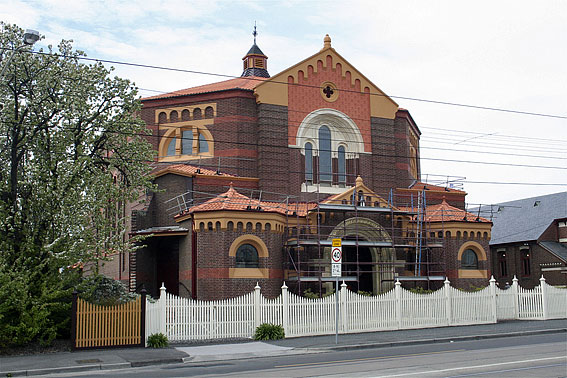
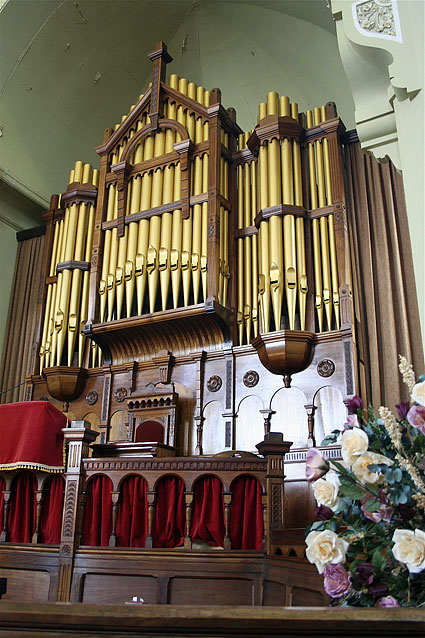
Photo: Trevor Bunning (Oct. 2008)
The Presbyterian congregation at Hawthorn dates back to 1864. The first church was a brick building in the Gothic style, its façade capped by a bellcote. A porch was added in 1884, but it quickly became inadequate to accommodate the 2000 Presbyterians resident in Hawthorn: it only seated 360 people.
In February 1891 an architectural competition was held to seek designs for a new church: the first prize was £50 and the second prize £25. The instructions clearly specified that "the style of architecture is not to be Gothic". It was to seat at least 600 and was to be built in dark brick with red dressings; the roof was to be of tiles, not slate (somewhat revolutionary at the time).
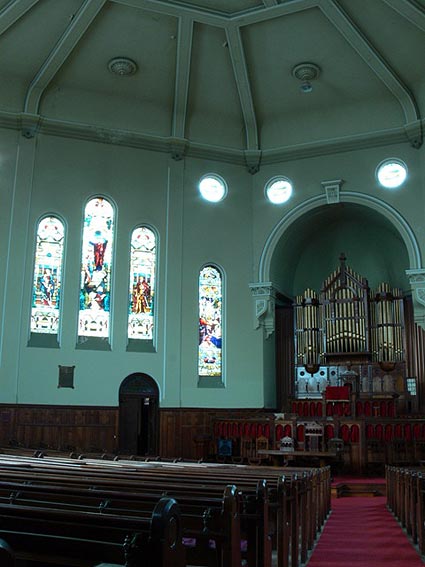
This foundation stone of the present church was laid on 12 September 1891 and it was opened the following year. It was built to the competition-winning design of George Allan. A tender from J. Paxton was received to build the church at a cost of £5090 in six months, although the projected tower, alas, was omitted. It was constructed from Hawthorn brick, with cement dressings, in the Romanesque style. The overall shape is that of a large octagon (a typical shape for early churches in this style) with an arched entrance and porches facing the street. It was popularly known as the 'cyclorama' owing to its shape. The windows have cement dressings and the tiled roof, which is capped by a timber flèche, is surrounded by a prominent corbel table. Unfortunately, the very grand octagonal tower and slated spirelet (of Gallic inspiration) planned for the left of the façade was never built (a familiar story during the 1890s depression when money frequently ran out).
The interior, with 46ft high walls and raked floor, is most impressive and possesses a resonant acoustic, although this was initially problematic for speakers and wires were stretched across the building to counteract the echoes. However, the resonance greatly enhances the sound of the organ, built in 1892 by Fincham & Hobday, its unusual casework in Tasmanian blackwood, with splendid carved detail, probably to the design of Allen. It was rebuilt and enlarged in 1923 by the Hawthorn organbuilder Frederick Taylor whose premises were nearby in Burwood Road. Since then, it has remained unaltered and is classified by the National Trust of Australia (Victoria) as a notable organ of the period. Between 2001 and 2004, the action, wind system and console were restored by Wakeley Pipe Organs Pty Ltd. The console fittings and action is by Taylor and represents the only major extant example of his work.
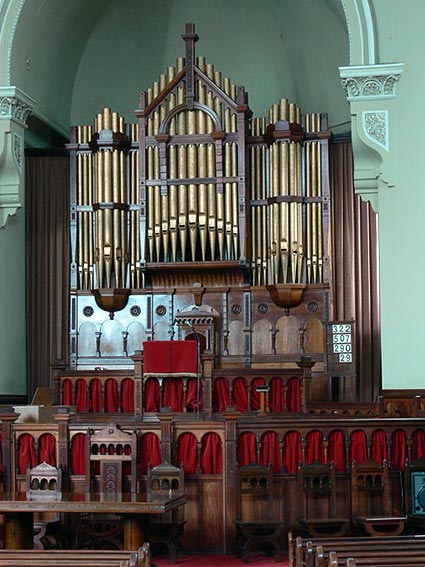
There are a number of large and impressive stained glass windows including 'Paul at Corinth'. The blackwood pews radiate out from the choir area and pulpit and attractive panelling lines the walls.
To the south of the church is the hall, dated 1883 in the pediment, an attractive building in Hawthorn brick, its style complementary to the adjacent church.

Click here to download MP3 files:
J.S. Bach: last movement of Sei gegrüßet variations played by Rhys Boak (2.3MB)
M. Duruflé: Sicilienne (from Suite Op. 5) played by Ryoko Mori (9.6MB)
The specification is:
| GREAT Open Diapason Loud Gamba Clarabella Dulciana Principal Rohr Flute Twelfth Fifteenth Swell to Great Choir to Great SWELL Bourdon Open Diapason Gedact Gamba Celeste Octave Fifteenth Cornopean Oboe Tremulant Sub Octave Octave CHOIR Hohl Flute Salicional Dolce Vox Angelica Orchestral Flute Clarinet Orchestral Oboe Swell to Choir PEDAL Open Diapason Bourdon Great to Pedal Swell to Pedal Choir to Pedal |
8 8 8 8 4 4 2-2/3 2 16 8 8 8 8 4 2 8 8 8 8 8 8 4 8 8 16 16 |
TC (Taylor 1923 - enclosed) TC |
compass: 56/30
tubular-pneumatic action
detached drawstop console
3 thumb pistons to Great
3 thumb pistons to Swell
lever pedals to Swell and Choir
Information supplied by JRM April 2006
 |
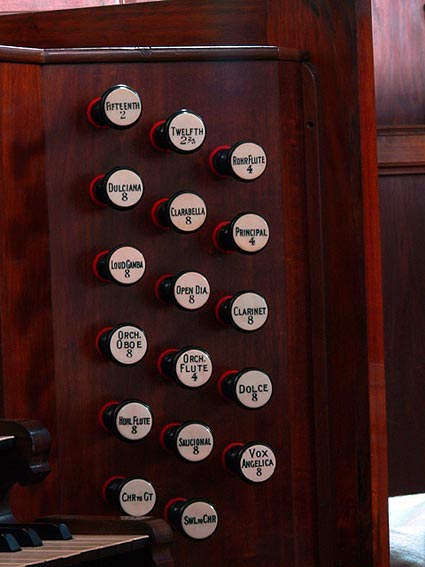 |
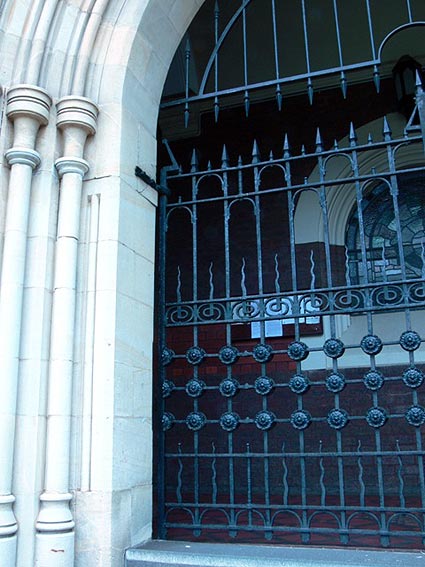 |
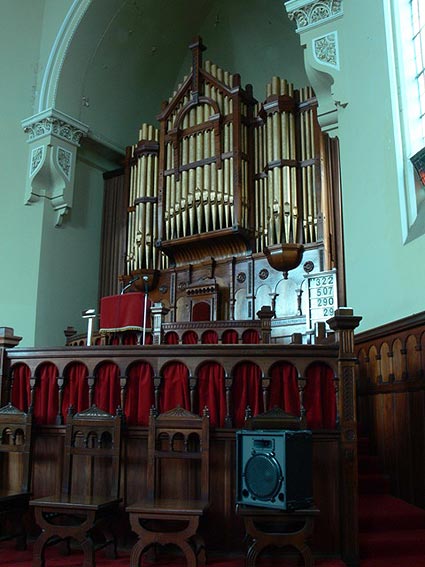 |
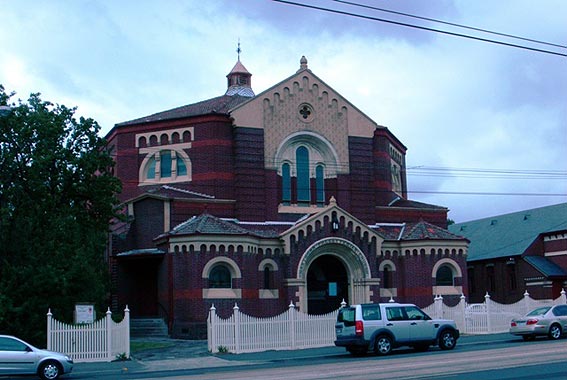
Photos by JRM
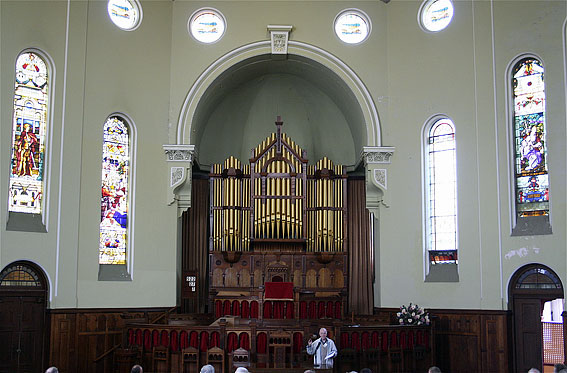



Photos above: Trevor Bunning (Oct. 2008)